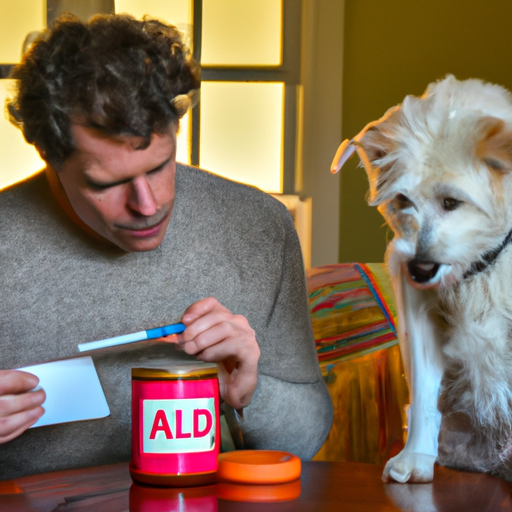As a loving caregiver for your furry friend, you are undoubtedly aware of the potential dangers that lurk in every nook and cranny of your home. One such danger is xylitol, a common sugar substitute found in many household items, which can be deadly to dogs if ingested. This article will guide you on how to treat xylitol poisoning in dogs at home.
H2: Understanding Xylitol and Its Dangers to Dogs
You might be asking, “what is xylitol?” Xylitol is a natural sugar substitute that is often used in foods like sugar-free gum, candy, and baked goods. However, while it is safe for humans to consume, it can be fatal to dogs.
| Common Sources of Xylitol |
|---|
| Sugar-free gum |
| Sugar-free candy |
| Baked goods |
| Certain medications |
| Some peanut butters |
| Toothpaste |
Ingestion of xylitol can cause a rapid and dangerous drop in your dog’s blood sugar (hypoglycemia), leading to symptoms such as loss of coordination, vomiting, and seizures.
H2: Recognizing the Symptoms of Xylitol Poisoning
As a vigilant caregiver, you need to be able to identify the symptoms of xylitol poisoning in your dog. These include:
- Sudden weakness or lethargy
- Loss of coordination
- Vomiting
- Trembling or shaking
- Seizures
Noticing these symptoms early could mean the difference between life and death for your beloved pet.
H2: What to Do if You Suspect Xylitol Poisoning
If you suspect your dog has ingested xylitol, you must act immediately.
- Remove your dog from the source of xylitol: Prevention is better than cure. Ensure that your dog cannot ingest any more of the toxic substance.
- Contact your vet immediately: This is not a situation where you can afford to wait and see. Your vet will guide you on the next steps to take.
- Do not induce vomiting unless instructed by a vet: Inducing vomiting could potentially cause more harm to your dog.
H2: Treating Xylitol Poisoning at Home
While professional veterinary care is essential in cases of xylitol poisoning, there are a few steps you can take at home to help your dog.
- Keep your dog calm: Stress can exacerbate the symptoms of xylitol poisoning.
- Follow your vet’s advice: They may instruct you to feed your dog a small amount of honey or corn syrup to temporarily boost their blood sugar.
- Monitor your dog closely: Keep a watchful eye on your dog for any changes in their condition.
H2: Preventing Xylitol Poisoning in the Future
Prevention is always better than cure. Here are some steps you can take to prevent xylitol poisoning in your dog.
- Keep products containing xylitol out of your dog’s reach.
- Always check the label of food items for xylitol before giving them to your dog.
- Educate others about the dangers of xylitol to dogs.
FAQ
Q: How much xylitol is toxic to dogs?
A: Even small amounts of xylitol can be deadly to dogs. If you suspect your dog has ingested any amount, contact your vet immediately.
Q: Can dogs recover from xylitol poisoning?
A: Yes, with prompt treatment, dogs can recover from xylitol poisoning. However, the prognosis worsens the longer the dog goes without treatment.
Q: How can I keep my dog safe from xylitol?
A: Keep all products containing xylitol out of your dog’s reach, and always check food labels before giving anything to your dog.
Remember, the key to keeping your dog safe from xylitol poisoning lies in prevention and prompt action. As a caregiver, your vigilance can make all the difference.



